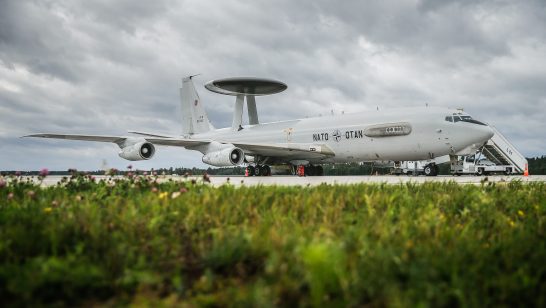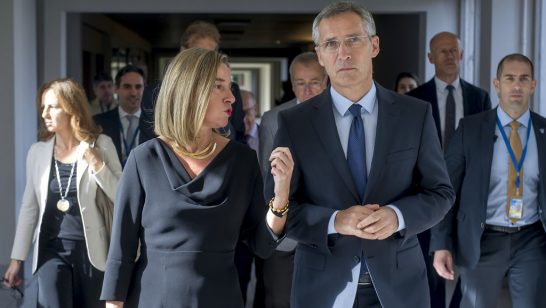
As NATO approaches its 70th anniversary, it now makes sense to initiate work on a new Strategic Concept. The current one from 2010 is visibly outdated; for example, its description of the security environment is that “the Euro-Atlantic area is at peace” and that NATO-Russian cooperation “contributes to creating a common space of peace, stability and security”. Its basic structure of three “core tasks” – collective defence, crisis management and cooperative security – remains valid and structurally sound, but its strategic merits are limited given the drastically changed security environment.
Still, appetite for revision is low. There are two basic arguments against initiating work on a new Concept. The first is that opening a drafting exercise in NATO would open “Pandora’s box” and expose, or even aggravate, rather than heal, existing rifts within the Alliance. The second is that NATO needs to maintain a significant degree of strategic flexibility given it is in the process of adapting to new threats, primarily those from Russia. Consequently, it can be argued, summit communiques provide sufficient direction for the Alliance, making the Strategic Concept less important. Yet in these uncertain times, even achieving the consensus to agree a summit communique should not be taken for granted.
The sceptics are partly right: it makes little sense to invest considerable time and effort to create a new document that merely updates the threat assessment and provides a laundry list of NATO’s activities. What the Alliance would benefit from, however, would be a deeper reflection on the strategic challenges it faces and ways to address them jointly. The result should provide meaningful guidance for NATO’s activities in the next decade, and reinforce Alliance cohesion.
Core challenges for NATO include:
Burden sharing – What does realistic transatlantic burden sharing look like? It is widely accepted that the Alliance-wide 2% GDP target for defence spending, as envisioned in the Wales pledge, will not be met by 2024. Therefore, NATO runs the risk of either having to admit defeat on the pledge, or start discussing how to punish some member states. Both outcomes would be disastrous. However, most Allies have made genuine efforts to raise military spending and improve capabilities. In addition, the EU has increased work on European defence cooperation. At the same time, rapid development of new technologies will create important capability gaps in various areas of operations. NATO will need to shift its focus from budget percentages to the quality and scope of non-US contributions. This would need to be agreed and accepted by all capitals, including Washington DC, in order to pave the way for a more advanced burden sharing formula.
Russia – What are NATO’s realistic objectives vis-à-vis Russia? Should NATO just play defence or also consider offence? Should it be, as suggested in an ELN report, that stabilisation of the relationship and minimisation of the risks of accidental or inadvertent escalation be the main objective? Alternatively, should NATO confront the Russian regime more directly, increasing the costs of its aggressive foreign and defence policy through deploying more NATO forces forward? Should it press hard against any Russian provocation, and substantially surge support for partners opposing Russia? Has the dismantling of the current arms control regime affected the relationship? These are all questions to be grappled with among the Allies.
Partnerships – How to make the most of the relationship? Cooperative security, which embraces a broad range of partnerships outside of the Alliance’s borders, might be the area most affected by changes in the strategic context. Russia is currently more of a strategic adversary than a strategic partner for many. Partners such as Sweden and Finland have moved closer to NATO in collective defence than anyone envisioned prior to 2014, blurring the lines between partner and ally – NATO must consider if this risks undermining the Article 5 commitment, or if it simply strengthens the Alliance. Moreover, as partners in the Balkans, the Caucasus, and Central Asia lock into strategic contests with Russia and the West, the Alliance is further confronted by delicate political and military decisions. As the heat rises between the US and China, and as North Korea deploys missiles that could hit not only the American homeland but also Europe, the concept and meaning of partnerships in the Asian context has too been transformed. As such, NATO would benefit deeply from coherent analysis of partnerships and their developments; assessing how these may enhance or detract from international security.
Open Door – Is further enlargement beneficial for the Alliance and European security? While the EU effectively paused any further enlargement in 2014, the Alliance has kept the door open to all European democracies that meet NATO standards. The last to join was Montenegro in 2017, with the next likely candidate being North Macedonia. Yet enlargement has increasingly become a topic of dispute between Russia and the Alliance – as well as within the Alliance itself. A number of member states have expressed ‘enlargement fatigue’ and a concern that expansion might lead to a deteriorated security situation, rather than a stabilised one. With a country like Georgia, for example, the state meets NATO standards but lacks adequate control over its territory due to Russian occupation; similarly, for Ukraine under multi-pronged attack from Russia, the vision of NATO membership is distant in the absence of increased pressure on Russia. If NATO is to contribute towards a Europe whole and at peace, while upholding the principle of each nation’s free choice of security policy, some bold strategic choices will be required in the coming years.
All of these issues pose dilemmas for NATO. There are few reasons to indulge in an anniversary-driven cosmetic update of the Strategic Concept, which may be achievable. However, there are many reasons to use the anniversary for a deep and serious reflection on the strategic challenges the Alliance faces, which may be difficult and for which there is currently little political appetite. Nevertheless, it is not impossible.
For a stumbling transatlantic community, the stakes are high. In order to prevail, it has to be bold rather than play it safe. Therefore, when the Foreign Ministers gather in Washington DC on April 3-4, the best step to securing a strong Alliance for the coming decades is to initiate a process to address the strategic challenges ahead – without necessarily defining in which format to proceed or the timeline for the final product.
The opinions articulated above also do not necessarily reflect the position of the European Leadership Network or any of its members. The ELN’s aim is to encourage debates that will help develop Europe’s capacity to address pressing foreign, defence, and security challenge.




